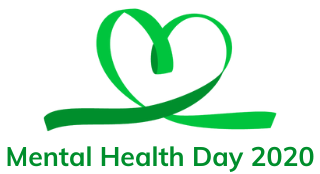What is Stroke? Understanding Stroke
What is Stroke?
A stroke is a medical condition that occurs when the blood flow to a part of the brain is disrupted. This disruption can be caused by a blood clot blocking an artery or a blood vessel bursting. As a result, the affected brain cells are deprived of oxygen and nutrients, leading to their damage or death.
The symptoms of a stroke can vary depending on the part of the brain that is affected. Common symptoms include sudden weakness or numbness in the face, arm, or leg, especially on one side of the body. Other signs may include difficulty speaking or understanding speech, sudden confusion, dizziness, severe headache, or trouble with coordination and balance.
Stroke is a serious medical emergency that requires immediate attention. Early treatment, usually within the first few hours, can help minimize brain damage and improve the chances of recovery. Treatment options may include medications to dissolve blood clots, surgical procedures, or rehabilitation therapies to regain lost abilities.
Prevention of stroke involves maintaining a healthy lifestyle, such as regular exercise, a balanced diet, and avoiding risk factors like smoking, excessive alcohol consumption, and high blood pressure. It is also important to manage conditions that can increase the risk of stroke, such as diabetes, heart disease, and high cholesterol.
If someone shows signs of a stroke, it is crucial to seek immediate medical help by calling emergency services. Recognizing the symptoms and acting quickly can save lives and prevent long-term disabilities associated with stroke.
Understanding Stroke
A stroke occurs when there is a disruption in the blood supply to the brain. This can be caused by a blockage in a blood vessel (ischemic stroke) or by bleeding in the brain (hemorrhagic stroke). Both types of strokes can have severe consequences and require immediate medical attention.
When a stroke occurs, brain cells begin to die within minutes due to the lack of oxygen and nutrients. The symptoms of a stroke may vary depending on the area of the brain affected, but common signs include sudden weakness or numbness in the face, arm, or leg, difficulty speaking or understanding speech, blurred or blackened vision, severe headache, dizziness, and loss of balance or coordination.
Prompt medical intervention is crucial in order to minimize the damage caused by a stroke. The treatment options will depend on the type and cause of the stroke, but they may include medications to dissolve blood clots, surgery to repair damaged blood vessels, and rehabilitation therapies to regain lost abilities.
It is important to be aware of the risk factors for stroke in order to prevent them or manage them effectively. These risk factors include high blood pressure, high cholesterol, smoking, obesity, diabetes, excessive alcohol consumption, and a sedentary lifestyle. Making healthy lifestyle choices, such as exercising regularly, eating a balanced diet, and managing underlying health conditions, can significantly reduce the risk of having a stroke.
Overall, strokes are serious medical emergencies that require immediate attention. Understanding the symptoms, risk factors, and treatment options can help save lives and improve outcomes for those who have experienced a stroke.
An Overview of Stroke
Stroke is a medical condition that occurs when the blood flow to the brain is disrupted, leading to damage to brain cells. It is a serious and potentially life-threatening condition that requires immediate medical attention.
There are two main types of strokes: ischemic stroke and hemorrhagic stroke. Ischemic stroke is the most common type and occurs when a blood clot blocks a blood vessel supplying blood to the brain. Hemorrhagic stroke, on the other hand, happens when a blood vessel ruptures, causing bleeding in the brain.
The symptoms of a stroke can vary but commonly include sudden weakness or numbness in the face, arm, or leg, especially on one side of the body. Other symptoms may include confusion, trouble speaking or understanding speech, difficulty seeing, dizziness or loss of balance, and severe headache.
Risk factors for stroke include high blood pressure, smoking, diabetes, high cholesterol levels, obesity, a sedentary lifestyle, and a family history of strokes. Age and gender (men have a higher risk than women) also play a role in stroke risk.
Immediate medical attention is crucial for a stroke, as timely treatment can help prevent further damage and improve the chances of recovery. Treatment options may include medications to dissolve the blood clot (in the case of an ischemic stroke), surgical intervention to repair or remove the damaged blood vessel (in the case of a hemorrhagic stroke), and rehabilitation therapy to regain lost abilities.
Prevention of stroke involves adopting a healthy lifestyle by maintaining a balanced diet, engaging in regular physical activity, quitting smoking, limiting alcohol consumption, and managing underlying health conditions such as high blood pressure and diabetes.
Stroke is a serious medical emergency that requires immediate attention to minimize its long-term effects and prevent additional complications. Recognizing the signs and symptoms of a stroke and acting quickly can save lives and improve outcomes for those affected.
